
The Body Shop embarks on a project to conserve forests
British skincare company The Body Shop has embarked on a project to conserve threatened forests around the world, starting with Vietnam
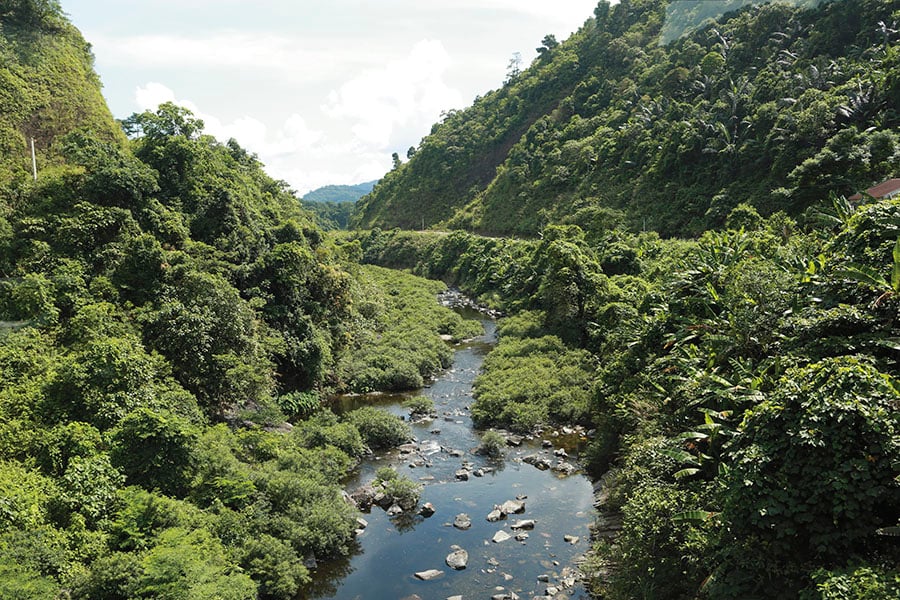 Courtesy: Body Shop
Courtesy: Body Shop
We are huddled around a camera trap inside the dense Khe Nuoc Trong forest in north-central Vietnam. After having climbed down, and then up, and then somewhat down (sometimes on all fours, with our feet in leech-resistant socks) along the steep sides of the Truong Son Mountain, perspiration streams down our skins and soaks into our clothes, as rain clouds gather around the mountain tops.
Tuan Anh Pham, president and deputy director of Viet Nature Conservation Centre, explains how the camera trap works: Whenever an animal is within about 30 square metres of the sensor, the digital camera captures its image. Camera traps enable improved tracking and recording of the presence and movement of animals that are either nocturnal or elusive. It is an essential element of regenerating the biodiversity of the 20,000-hectare tract of Annamite Lowland Forests within which we are standing, and which has 30 percent or less of its original vegetation cover remaining. The rest has been destroyed by decades of logging, hunting and poaching; not to mention entire landscapes that have been permanently denuded and rendered barren by Agent Orange, a chemical rained down by American planes to smoke out Viet Cong soldiers during the Vietnam War that lasted for 20 years through the ’50s, ’60s and ’70s.
Viet Nature (which has also taken up several other conservation initiatives such as community engagement to increase awareness around forest protection) now has the money to buy more of these digital camera traps because of its recent partnership with World Land Trust (WLT) and The Body Shop (TBS). The British cosmetics and skincare company, owned by L’Oréal, has embarked on a mission to conserve and regenerate thousands of hectares of forests around the world, as part of its commitment to “enrich, not exploit”. Building bio-bridges—regenerating tracts of destroyed habitat that connect two existing forest lands in order to provide animals an environmentally viable corridor to move in and increase in numbers—is one of the many steps the company is taking towards its broader goal of becoming “the world’s most ethical and truly sustainable global business”.
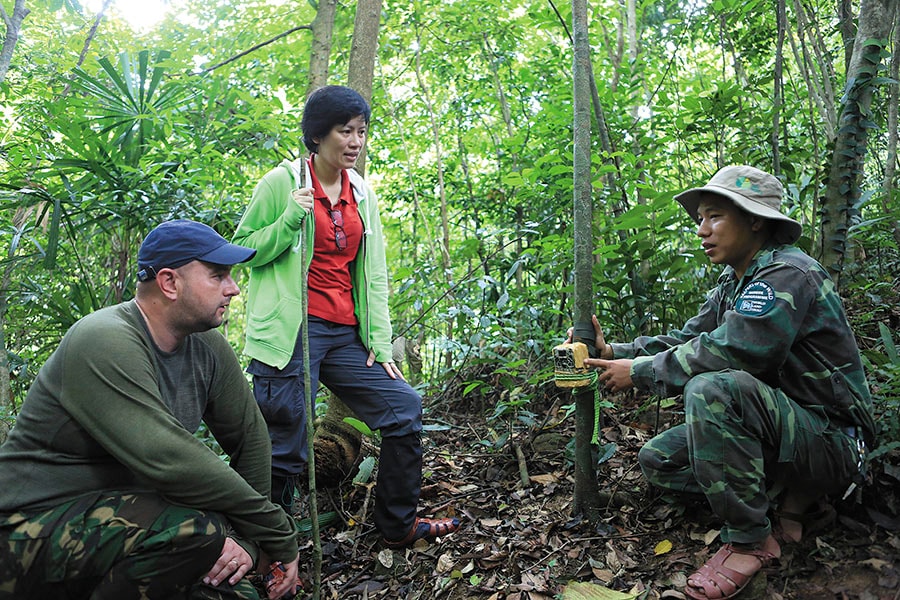
Image courtesy: Body Shop
“We build bio-bridges all over the world,” says Roger Wilson, senior conservationalist at WLT. TBS has worked with WLT for more than two decades and has given more than £700,000 towards conservation efforts. Earlier projects where the two organisations have worked together include the Wood Positive project in 2012 (which aimed to protect and regenerate the Brazilian Atlantic Rainforest and the Andean foothills in Ecuador), and the Oils of Life project in 2015 (by which a million seeds of native trees would be planted in Ecuador). “In every place we work with a local partner who has the knowledge and experience of working with local communities. In this case, we have partnered with Viet Nature, with whom we have been working since 2012.”
WLT’s conservation work in Khe Nuoc Trong forest is executed through its Carbon Balanced programme, with funding from The Body Shop and Carbon Balanced Paper. The Vietnam project, Wilson adds, epitomises the concept of a bio-bridge: On one side of the demarcated area is the Phong Nha-Ke Bang National Park, and on the other is the Bac Huong Hoa Nature Reserve; both have a very high degree of biodiversity, and both areas are under threat, with 40 globally endangered species living there.
The Khe Nuoc Trong forest is located in the Quáng Binh Province of north-central Vietnam and is part of a larger tract of forested area that extends into the neighbouring Quang Tri Province. Although the forest department of Quáng Binh Province had proposed that the area concerned (which was subsequently demarcated as the bio-bridge) be upgraded to the status of a protected area, the authorities were unable to do so because of lack of funds to increase the level of patrolling and resources that a protected area would demand. Hence, the provincial authorities decided to work with non-governmental organisations (such as Viet Nature) to ensure increased conservation efforts.
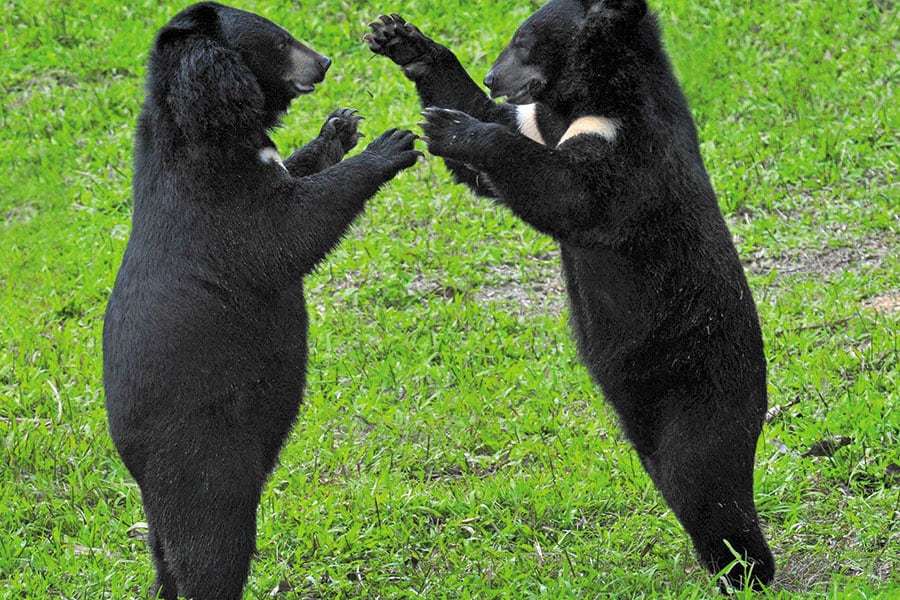
Image: Getty Images
“The forests here are very quiet,” says Wilson, who has more than 40 years of experience in conservation fieldwork, and more than 30 years of experience in forestry and restoration ecology projects. “Not like the forests in India, which are raucous with the calls of birds.” The reason, he adds, is the level of threat that the forest creatures face. Hunting and loss of natural habitat due to logging are the two most serious threats.
The demand for wildlife animal products, some of which are believed to have medicinal properties, comes largely from outside Vietnam, says Le Trong Trai, director of Viet Nature, who has worked for more than 35 years on biodiversity inventories, and conservation planning and management. A specialist in ornithology and mammalogy, Trai is also responsible for the discovery of a new species of muntjacs (small south-east Asian deer), and the discovery of several species of birds. He says the most threatened species are those that feed on the ground. Consequently, three large mammals (which were only recently discovered)—the large-antlered muntjac, the Annamite muntjac and the Annamite striped rabbit—are on the endangered list. Also on the list are the Chinese three-striped box turtle, the Southern white-cheeked crested gibbon, the Asiatic black bear, the red-shanked douc and pangolins.
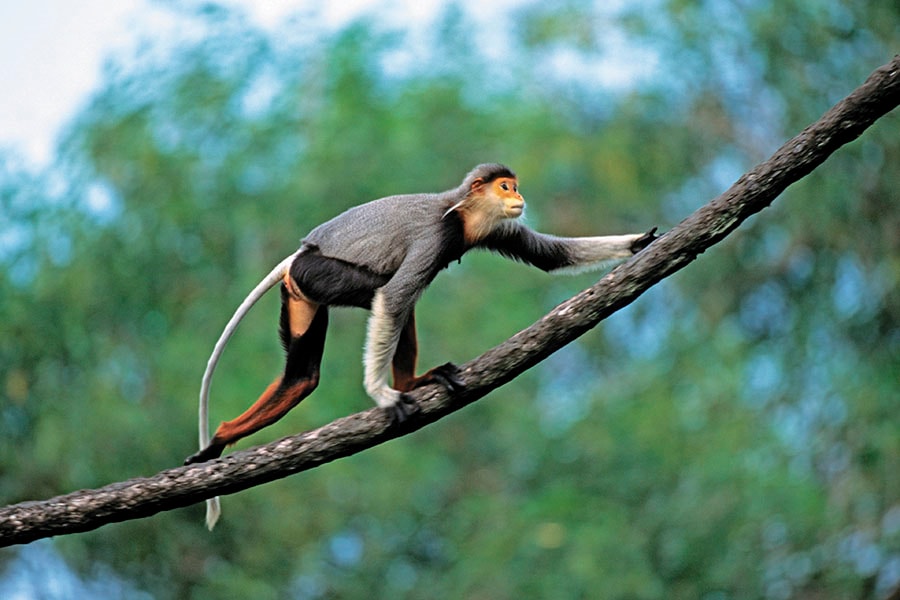
The Red Shanked Douc
Image: Getty Images
The red-shanked douc has become the face of TBS’s campaign to raise awareness among its customers about the bio-bridges programme. The douc (Vietnamese for ‘monkey’) has been named Reggie, and the campaign urges customers to help him “find love”: For every purchase of a TBS product, the company will restore 1 square metre of the forest; from every such transaction, it will donate £0.01 for this. As of October 4, TBS has been able to restore 11,262,631 sq m of land globally; it is aiming to protect and restore 14.5 million sq m of forests in Vietnam.
Now that the Khe Nouc Tran forest is a protected area, there are defined boundaries within which there are strict rules against logging and hunting; buffer and habitation zones have been created. Indigenous communities living in these areas are allowed to collect non-timber forest produce, but in a sustainable manner. Viet Nature works with these communities to raise awareness. “Changing the mindset is one of the most challenging tasks,” says Wilson.
Protecting the forest includes regular patrolling, stopping illegal logging and poaching, and removing traps and snares. This is also where camera traps come into play, enabling Viet Nature to study the biodiversity of each location and develop programmes accordingly. Data gathered by forest guards—who spend up to a week at a time deep inside the forest—to monitor movement of animals and possible hunters and loggers are entered into software that maintains records.
This data is critical in analysing the success of a programme. “Private corporations want evidence of change,” says Wilson. While such interventions put a quick brake on illegal activities, it takes longer—about three years—for the biodiversity of an area to regenerate itself, and five years for the forest cover to improve. “This is a 30-year vision,” says Wilson.

TBS’s Tea Tree Oil products support local communities in Kenya, while its Oils of Life products support reforestation in Ecuador
TBS’s next stop towards building bio-bridges is India. In 2017, it will begin a bio-bridges project in the Garo Hills in Meghalaya in partnership with World Land Trust and their local partner Wildlife Trust of India.
Regenerating the vegetation and biodiversity of the 20,000 hectares is one part of TBS’s efforts. What is also crucial to the project is the involvement of the local population—three of Vietnam’s 52 indigenous tribes live on the outskirts of these forests—who have traditionally relied on the forest for sustenance, but have increasingly turned to poaching and logging to supplement their meagre incomes. TBS is now providing these communities with income-generating opportunities—such as recruitment of forest guards—that aim to discourage them from poaching and logging.
TBS’s efforts to engage the indigenous communities around the Khe Nuoc Trong forest ties in with the company’s Community Trade programme and its aim to ensure that 100 percent of the natural ingredients it uses are traceable and sustainably sourced. “We take great care when sourcing raw materials through our Community Trade partners who are located in 21 countries,” says Kate Levine, international director of commitment and corporate communications, TBS. “At a minimum, we aim to ensure that their production has no negative environmental impact. Where possible, we try to use our demand to drive positive environmental benefit.”
For instance, TBS’s Community Trade programme in Brazil, from where nut oil is sourced for use in many TBS products, has helped protect 3,000 hectares of primary Amazon rainforest. The programme also sources soya oil and organic alcohol that are produced by using sustainable organic farming techniques.
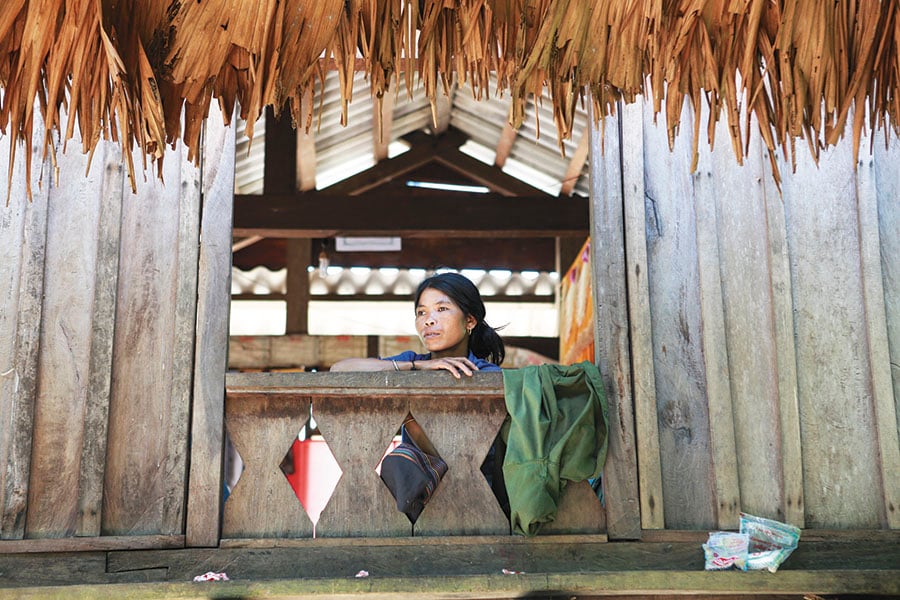
Three of Vietnam’s 52 indigenous tribes live on the outskirts of the Khe Nuoc Trong forest
Image courtesy: Body Shop
In Vietnam, TBS completed plant species mapping of the Khe Nuoc Trong forest area in 2015 to study potential ingredients that could be used in future products, and is now at the stage of testing these for their properties, efficacy and quality. It takes a minimum of three years between species mapping and an ingredient becoming available for use in production.
Apart from ensuring sustainable sourcing of ingredients, TBS is also taking steps to reduce its overall environment footprint by cutting down on carbon emissions and environmentally harmful ingredients. “All consumer products enter the environment at some stage, either while they are used or when they are disposed of,” says Levine. “From end-2015, all of TBS’s scrubs contain natural exfoliators; plastics, particularly polyethylene, are no longer used in any of our products as microbead exfoliating particles. In 2014, we made a commitment to replace these ingredients with a naturally-derived alternative.”
Innovation has also been extended to the packaging of products (the company aims to reduce the use of fossil fuel-based plastic packaging by 70 percent by 2020). “We are partnering with a California-based company called Newlight Technologies to introduce ‘AirCarbon’,” says Simon Locke, international environmental sustainability manager at TBS. “AirCarbon is a thermoplastic material that behaves in the same way as the plastics in packaging. But rather than using oil as a carbon source for plastic, AirCarbon uses methane and carbon dioxide, which would otherwise be released into the air.” Not only does this process remove greenhouse gases from the atmosphere, it also helps keep fossil fuels in the ground. The new packaging is expected to be used from early 2017.
Inside the Khe Nuoc Trong forest, as we begin to climb our way back, we stop to catch our breath on the pebbled bed of a stream. The water now is a trickle, in the drought-stricken months before the rains arrive in September; but it is cold, crystal clear, and sparkling. The clouds have deepened, but inside the forest it is humid and still. Nothing moves. And all is silent. Except for the gurgling of the stream.
(The writer travelled to Vietnam on the invitation of The Body Shop)
(This story appears in the 30 November, -0001 issue of Forbes India. To visit our Archives, click here.)





